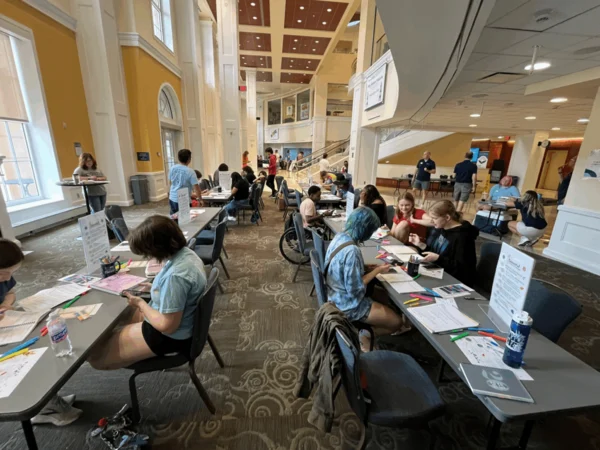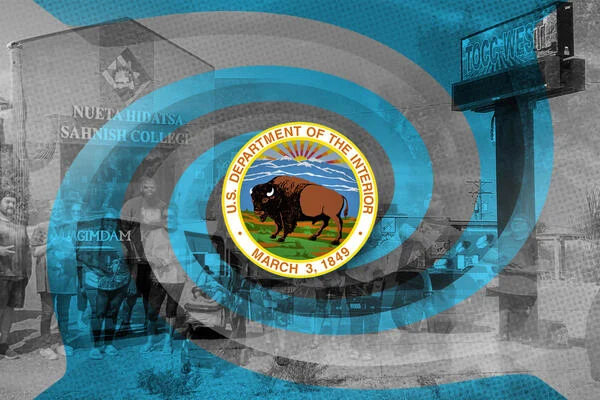Since the COVID-19 pandemic forced many schools to move instruction online, some students have struggled to regain or even learn the interpersonal and organizational skills they need to succeed in college.
To rectify that, the University of Mary Washington created a new four-week program this fall to help incoming students hone their planning and social skills. Called LaunchPad, the program aims to help ease students’ transition into higher education, provide them with life-management skills and connect them with peers and supportive staff.
What’s the need: Data shows that current traditional-aged college students are less likely than previous cohorts of students to be prepared for postsecondary education. A 2024 report from ed-tech provider EAB found that students increasingly struggle with resiliency and conflict resolution and are less likely to be involved in campus organizations or social opportunities.
Surveys show that students are interested in receiving additional support to help them get organized and learn to manage their time. A study from Anthology, also published in 2024, found that 40 percent of students feel overwhelmed and anxious about their academic workload, and a quarter say they lack time-management skills. Similarly, a 2023 survey by Inside Higher Ed found that one-third of respondents want help planning their schedules and managing their time, such as a through a deadline organizer.
At the University of Mary Washington, “many students struggle with organization, time management and involvement, especially post-pandemic,” said April Wynn, director of the first-year experience. “LaunchPad provides structured support in these areas.”
How it works: LaunchPad teaches students executive functioning and socialization skills, including how to maintain a schedule, track deadlines, employ technology, communicate effectively and respond to adversity, according to a university press release.
Starting the first week of class, students are invited to participate in a LaunchPad session, beginning with syllabus organization and then in subsequent week moving on to Microsoft basics, campus involvement and time management.
Each week, students could opt in to a LaunchPad activity to help them develop practical life skills.
University of Mary Washington
Teaching the tech tools is essential because students often enroll with more experience using Chromebooks than Microsoft products, Wynn noted. Students also received a physical planner during the syllabus session, marking upcoming deadlines at the start of the term to help them prepare.
The initiative is supported by a Fund for Mary Washington Impact Grant, which provides donor-funded grants, ranging from $500 to $5,000, to students, faculty and staff for projects. Wynn and Dean of Students Melissa Jones applied for the grant and received $5,000 to fund peer-mentor stipends, day planners, workshops and more.
LaunchPad involves representatives from a variety of campus offices, including the career center, student activities, new student programs, the writing center, campus recreation, housing and residence life, and the Office of Disability Resources.
The impact: The fall 2025 pilot offered 51 hours of programming over four weeks, with 378 student participants and 466 hours of work by staff, faculty and peer mentors, Wynn said. “Student and facilitator feedback was collected at each session, with additional student survey feedback scheduled for December, after they’ve had time to test out what they learned in the program,” she said.
The university is considering a shorter program in the spring semester to capture transfer and other new students, as well as expanding the fall program to six weeks to include major and career advising, Wynn said. “While LaunchPad is geared toward first-year students, we hope to plan it around the fall senior class meeting in the future to provide a refresher for soon-to-be graduates,” Wynn said.
Getting Students Organized
Several other colleges have implemented new programs to help students build executive-functioning skills.
- Faculty at DePaul University created a short course in the College of Communication to help students set goals and reflect on their academic progress.
- Wake Forest University’s Center for Learning Access and Student Success established a digital syllabus that outlines all assignments and assessments for each class a student is enrolled in, creating a centralized depot for organization.
- Dartmouth College created regular programming to help students build time management and organization skills, led by peers to normalize challenges.
How does your college encourage students to be organized and improve their life skills? Tell us more.









